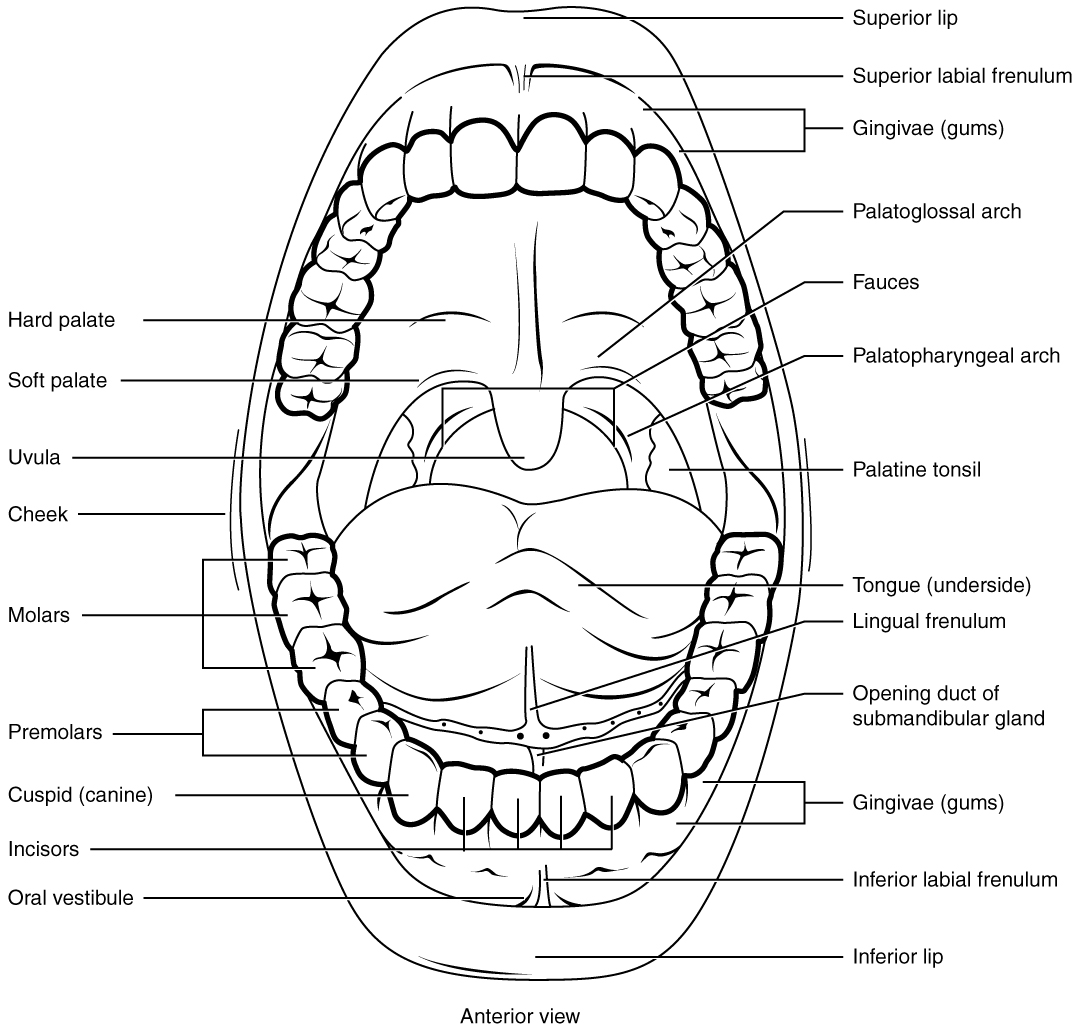| << Chapter < Page | Chapter >> Page > |
In this section, you will examine the anatomy and functions of the three main organs of the upper alimentary canal—the mouth, pharynx, and esophagus—as well as three associated accessory organs—the tongue, salivary glands, and teeth.
The cheeks, tongue, and palate frame the mouth, which is also called the oral cavity (or buccal cavity). The structures of the mouth are illustrated in [link] .
At the entrance to the mouth are the lips, or labia (singular = labium). The lips cover the orbicularis oris muscle, which regulates what comes in and goes out of the mouth. The cheeks make up the oral cavity’s sidewalls. The next time you eat some food, notice how the muscles in your cheeks and the orbicularis oris muscle in your lips contract, helping you keep the food from falling out of your mouth.
When you are chewing, you do not find it difficult to breathe simultaneously. The next time you have food in your mouth, notice how the arched shape of the roof of your mouth allows you to handle both digestion and respiration at the same time. This arch is called the palate . The anterior region of the palate serves as a wall (or septum) between the oral and nasal cavities as well as a rigid shelf against which the tongue can push food. It is created by bones of the skull and, given its bony structure, is known as the hard palate . If you run your tongue along the roof of your mouth, you’ll notice that the hard palate ends in the posterior oral cavity, and the tissue becomes fleshier. This part of the palate, known as the soft palate , is composed mainly of skeletal muscle. You can therefore manipulate, subconsciously, the soft palate—for instance, to yawn, swallow, or sing (see [link] ).

A fleshy bead of tissue called the uvula drops down from the center of the posterior edge of the soft palate. It serves an important purpose. When you swallow, the soft palate and uvula move upward, helping to keep foods and liquid from entering the nasal cavity. Unfortunately, it can also contribute to the sound produced by snoring.
Perhaps you have heard it said that the tongue is the strongest muscle in the body. Those who stake this claim cite its strength proportionate to its size. Although it is difficult to quantify the relative strength of different muscles, it remains indisputable that the tongue is a workhorse, facilitating ingestion, mechanical digestion, sensation (of taste, texture, and temperature of food), swallowing, and vocalization. Working in concert, the muscles of the tongue perform three important digestive functions in the mouth: (1) position food for optimal chewing, (2) gather food into a bolus (rounded mass), and (3) position food so it can be swallowed.

Notification Switch
Would you like to follow the 'Digestive system' conversation and receive update notifications?